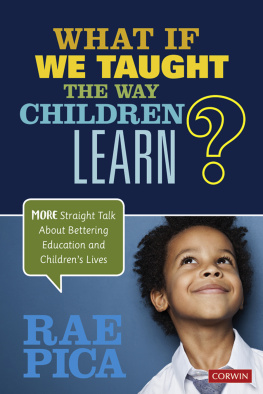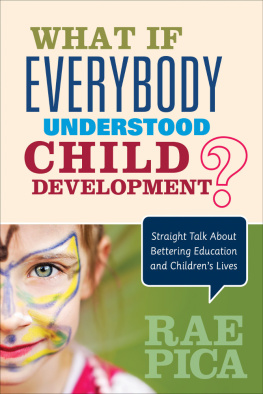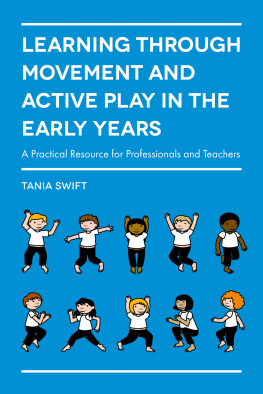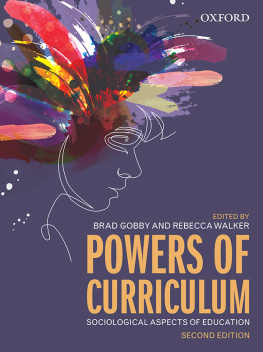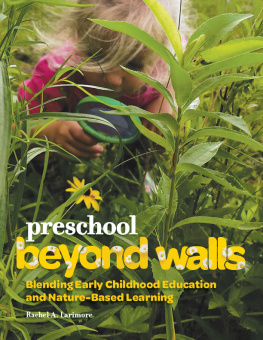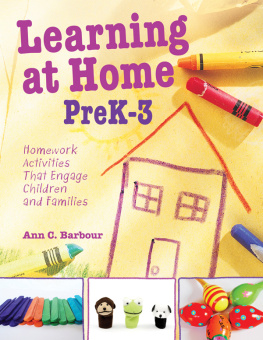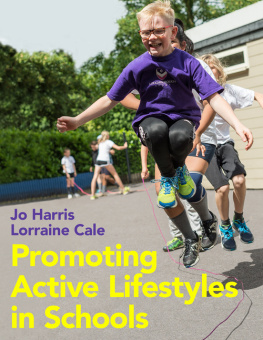
Published by Redleaf Press
10 Yorkton Court
St. Paul, MN 55117
www.redleafpress.org
2014 by Rae Pica
All rights reserved. Unless otherwise noted on a specific page, no portion of this publication may be reproduced or transmitted in any form or by any means, electronic or mechanical, including photocopying, recording, or capturing on any information storage and retrieval system, without permission in writing from the publisher, except by a reviewer, who may quote brief passages in a critical article or review to be printed in a magazine or newspaper, or electronically transmitted on radio, television, or the Internet.
First edition 2014
Cover design by Ryan Scheife, Mayfly Design
Cover artwork composed from images: (empty room) ssstep/iStockphoto; (watercolor circles abstract and colored spots) crisserbug/iStockphoto; (young boy playing with toy balls) jwebb/iStockphoto
Interior design by Ryan Scheife, Mayfly Design
Typeset in Kepler MM
Interior illustrations by Chris Wold Dyrud
Guidelines on page 12 are from Physical Activity for Children: A Statement of Guidelines for Children Ages 512, 2nd ed., by the American Alliance for Health, Physical Education, Recreation and Dance (AAHPERD) (Reston, VA: AAHPERD, 2004). Reprinted with permission.
Excerpts on page 13 are from Developmentally Appropriate Practice in Early Childhood Programs Serving Children from Birth through Age 8, a position statement by National Association for the Education of Young Children (NAEYC). Copyright 2009 NAEYC. www.naeyc.org/files/naeyc/file/positions/PSDAP.pdf. Reprinted with permission.
Excerpts on pages 12 and 13 are from NAEYC Standards for Early Childhood Professional Preparation Programs, a position statement by NAEYC. Copyright 2009 NAEYC. http://www.naeyc.org/files/naeyc/file/positions/ProfPrepStandards09.pdf. Reprinted with permission.
Library of Congress Cataloging-in-Publication Data
Pica, Rae, 1953-
Early elementary children moving and learning : a physical education curriculum / Rae Pica.
pages cm
Summary: This lively movement program complements any early elementary curriculum. With many developmentally appropriate, standards-based activities, this resource provides ideas for basic movement, cooperative activities, educational gymnastics, and rhythm and dance lessonsProvided by publisher.
Includes bibliographical references.
ISBN 978-1-60554-272-0 (e-book)
1. Movement educationStudy and teaching (Elementary) 2. Movement educationCurricula. 3. Physical education for children. I. Title.
GV452.P514 2014
372.86'8dc23
2013031263
The three books in the Moving & Learning series are dedicated to my angel, Fredrick Davis.
He knows why.
Contents
This section consists of the quieter activitiesthose involving isolated body parts, such as the hands, face, arms, or legs, and specific relaxation exercises. Choose these activities to psychologically and physically prepare your students to begin or end their movement experiencesor any time a less vigorous activity is called for.
These activities explore the fundamental locomotor and nonlocomotor skills and the movement elements of space, shape, time, force, and flow. They form the foundation of a child-centered physical education program and provide the basic knowledge essential to the next three categories.
The activities in this section serve three purposes: (1) They offer the students opportunities to work cooperatively with partners and in small and large groups. (2) They provide greater challenge, beyond what the children experience in unit 2. (3) These activities can physically and emotionally prepare the students to successfully work together in those educational gymnastics and rhythm and dance activities in units 4 and 5 requiring participation in pairs or groups.
Included in this section are activities related to the gymnastic skills of transferring weight, rolling, and balancing. Also included in this unit is exploration of combinations of locomotor and nonlocomotor skills, as gymnastics typically involves the sequencing of movement skills.
The movement element of rhythm, the musical concepts of beat and meter, and the qualities of swinging, sustained, suspended, percussive, vibratory, and collapsing movement are explored in this unit. The Statues game offers students the opportunity to improvise and express themselves to a variety of music, and the More Movement Words activities provide a chance for students to perform combinations of skills in interpretive and expressive ways. All of the activities in this unit prepare children for dance experiences in the upper elementary grades.
I couldnt be happier that the Moving & Learning series is finding a home at Redleaf Press. Its become clear to me that this is where these books belong. Id like to thank Kyra Ostendorf and David Heath for the warm welcome, with extra-special thanks to David for being a fabulous editor. Working with you was such a pleasure!
Im forever grateful to Richard Gardzina for the original music that accompanies these curriculum packages. He is a remarkable composer, and what I especially love about what he created here is that he never considered it childrens music. Instead, he set out to compose and perform the best music he could.
Special thanks to the children and teachers with whom Ive worked over the yearsthose on whom I practiced and those whove embraced the movement message at my presentations. Your enthusiasm, along with your expressions of appreciation over the years, has kept me going!
Deep appreciation to my mom, whose pride in me warms my heart.
Openers and Closers

Basic Movement

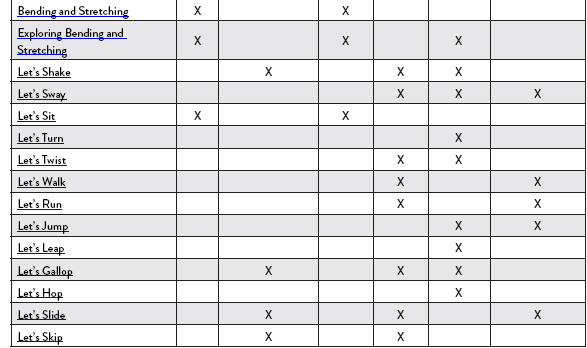
Cooperative Activities

Educational Gymnastics
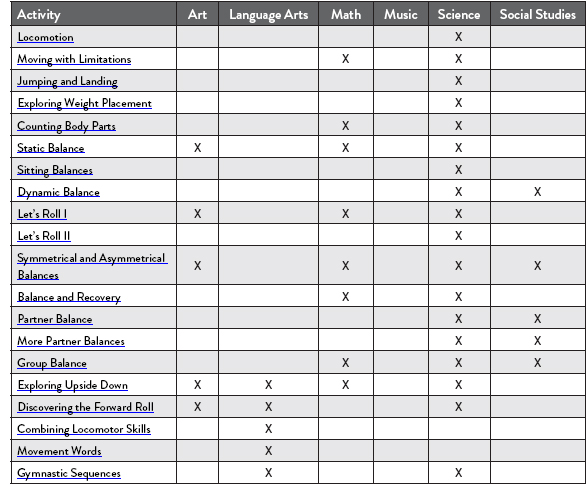
Rhythm and Dance


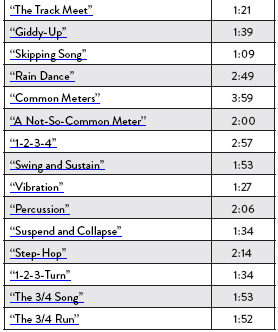
Welcome to the Moving & Learning family! The movement program you have in your hands, Early Elementary Children, is intended for use with children ages six to eight years old and is being used in schools, child care settings, recreation centers, and gymnastic centers throughout the United States and in several other countries.
The program consists of activities falling under five categories: Openers and Closers, Basic Movement, Cooperative Activities, Educational Gymnastics, and Rhythm and Dance. Naturally, there is some overlap and interrelatedness between activities from one category to another. However, I chose the placement of each activity according to the category for which it seemed
Next page

